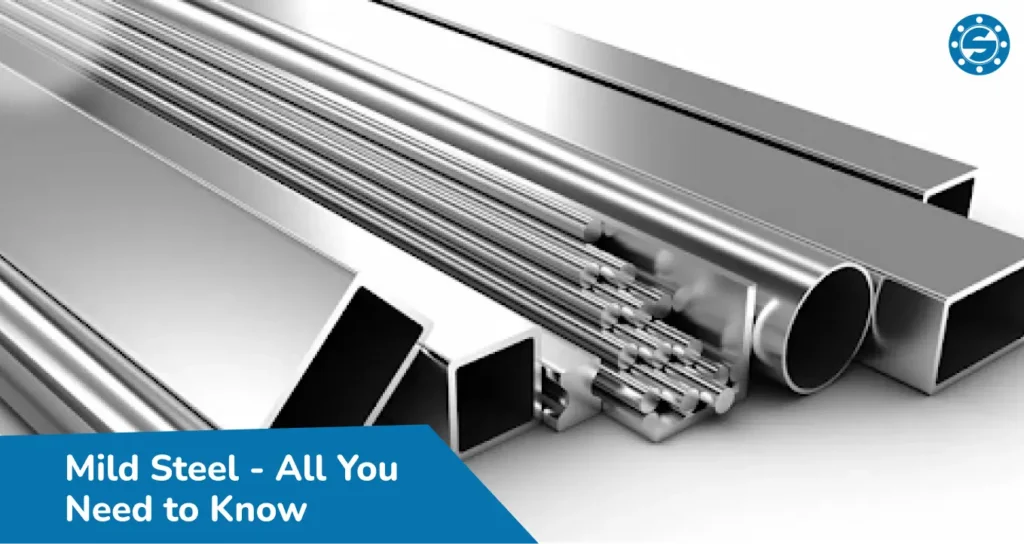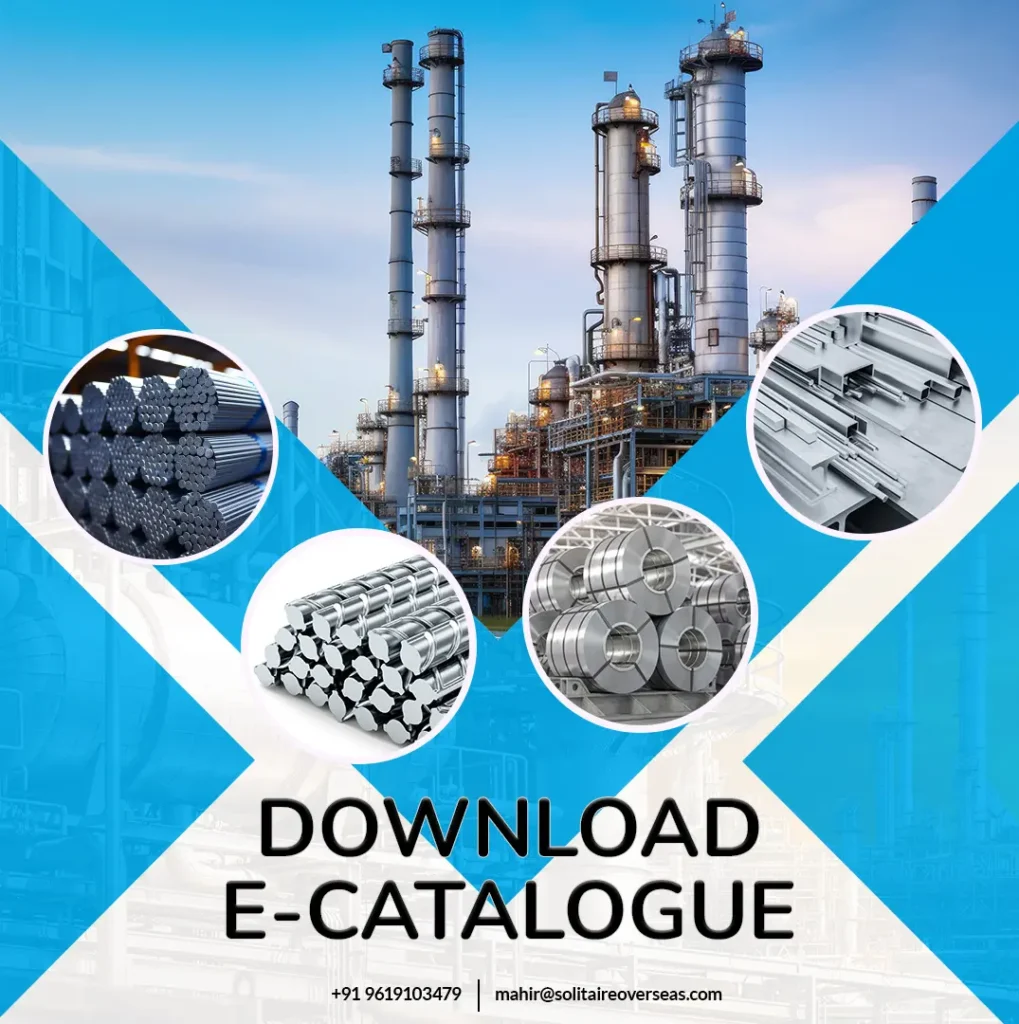Mild Steel - All You Need to Know

Solitaire Steel, we take pride in offering a wide range of mild steel products at competitive prices. Our inventory includes various grades such as Corten Grade A , EN24T, EN8, S275JR, EN3B, Low Carbon 500B, EN1A, A142, A193, A252, and galvanized steel to BS EN ISO 1461 standards. We also stock BS4 T45 Carbon-manganese steel, conforming to BS5T100/S600 tube specifications.
Mild steel, a type of ferrous metal composed of iron and carbon, is known for its affordability and suitability for a broad spectrum of general engineering applications. With its high iron content, low-carbon mild steel exhibits good magnetic properties, classifying it as a ‘ferromagnetic’ material.
Containing between 0.16% and 0.29% carbon, mild steel features a relatively high melting point, ranging from 1450°C to 1520°C. This high melting temperature enhances its ductility when heated, making it ideal for processes such as forging, cutting, drilling, and welding, as well as being easy to fabricate.
While mild steel isn’t suitable for through hardening, it can be case hardened. This process involves heating the steel and introducing a reactive carbon source, followed by quenching to harden the surface layer, known as the ‘case.’
Recyclability is another key benefit of mild steel, including its galvanized variants. However, untreated mild steel does not possess strong corrosion resistance. This can be significantly improved by applying protective coatings, such as red oxide primers, metal paints, or zinc treatments, to safeguard against rust and enhance the material’s appearance.
To clean mild steel, ‘pickling’—a chemical surface treatment—can be used to remove stains, contaminants, rust, and scale. Surface rust can also be mechanically removed through grinding, followed by the application of protective coatings like red oxide primer, zinc primer, and metal paints or sprays.
Mild steel is graded based on its chemical composition, production methods, and properties, ensuring that you can select the best material for your specific project needs.
How Is Low Carbon Steel Made?
Low carbon steel, also known as mild steel, is produced by carefully controlling the carbon content through heat treatment. As the carbon content in the steel increases, the material becomes harder but less ductile, meaning it may become brittle and prone to fracturing under excessive stress, rather than bending.
The process of manufacturing low carbon steel is quite similar to that of other carbon steels. The primary difference lies in the carbon content, which is lower in mild steel, giving it distinct properties such as lower strength and hardness compared to higher carbon steels.
Over time, these manufacturing methods have evolved to become more efficient and cost-effective. Today, producing mild steel from pure iron involves three key steps, allowing for consistent quality and performance.
Primary Steelmaking
In this stage, iron ore is combined with coal and lime and heated in a blast furnace, which can hold between 100 to 400 tons. The lime acts as a flux, creating a protective layer over the molten metal.
Modern steelmaking primarily uses two methods: the Basic Oxygen Furnace (BOS) and the Electric Arc Furnace (EAF). Both are advancements of the original Bessemer process. In the BOS process, oxygen is blown into the molten iron while scrap steel is added, reducing the carbon content to a maximum of 1.5%. In developed countries, the EAF method is favored, where scrap steel is melted using high-powered electric arcs, producing high-quality steel.
Secondary Steelmaking
The second stage further reduces the carbon content and adds alloying elements. This is achieved by adjusting furnace conditions, such as temperature and cooling rate, to meet the specific type of steel required. The secondary steelmaking process may involve techniques like CAS-OB, degassing, ladle furnace, ladle injection, and stirring.
Casting and Primary Forming
Once the steel has the desired carbon content and other elements, it is poured into a mold during the casting process, where it solidifies into shapes like slabs, blooms, and billets. These shapes might need surface improvement, often achieved through hot rolling, which is the primary forming process. The resulting steel products are categorized into flat products, custom products, long products, and seamless tubes.
Secondary Forming
Mild Steel Properties
| Physical Property | Value |
|---|---|
| Density | 8000 |
| Melting Point | 1370-1400°c |
| Modulus of Elasticity | 190-210 GPa |
| Electrical Resistivity | 0.7 µΩm |
| Thermal Conductivity | 42.7W/m.K |
| Thermal Expansion | 16-17 µm/m-k |
| Mechanical Property | Value |
|---|---|
| Yield Strength | 345 N/mm² |
| Tensile Strength | 485 N/mm² |
| Proof Stress 0.2% | – |
| Shear Strength | – |
| Hardness | 105 Vickers – HV |
| Elongation (in 200mm) | 20% minimum |
Chemical composition of Mild Steel (% of weight)
| Carbon | Silicon | Manganese | Phosphorus | Sulphur |
|---|---|---|---|---|
| 0.15 max | 0.25 – 0.75 | 0.2 – 0.5 | 0.07 – 0.15 | 0.03 max |
| Aluminium | Copper | Cromium | Nickel | Iron |
| 0.015 – 0.06 | 0.25 – 0.55 | 0.5 – 1.25 | 0.65 max | Balance |
Machinability
Cutting
Welding
Applications and Use-Cases
Mild steel is incredibly versatile, and you likely encounter it every day without even realizing it. It’s the most common metal used in various industries due to its affordability and adaptability. Here are some key applications:
Construction Mild steel is a staple in construction, valued for its strength, flexibility, and ease of use. It can be easily joined and withstands varying loads, making it ideal for structural applications. It meets stringent seismic and wind requirements, resists rot, fire, and insect damage, and is relatively cost-effective. You’ll find mild steel in everything from bridges to buildings.
Machinery Applications In the manufacturing of machinery and automobiles, mild steel is a top choice due to its affordability, weldability, and compatibility with various cutting and coating methods. It’s commonly used for making frames, panels, and other essential components.
Pipelines and Poles Mild steel’s ductility makes it perfect for pipelines and poles that need to endure harsh environments. It can be easily welded, and its slight flexibility allows it to adjust to temperature changes, preventing damage from expansion or contraction.
Cutlery and Cookware While stainless steel has traditionally dominated this area, mild steel is gaining popularity among chefs. It offers durability, a high-temperature tolerance, and the ability to be seasoned to become non-stick. Additionally, it maintains sharp edges longer and can be protected against corrosion with proper care.
Fencing Mild steel is ideal for creating intricate and attractive fencing. Its malleability allows for detailed designs, and with the right coating or galvanization, it becomes long-lasting and rust-resistant, combining both functionality and aesthetic appeal.


